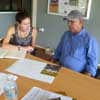University of Melbourne Architecture News, Lectures, Building Talks, ABP Events
University of Melbourne Architecture Events News
Faculty of Architecture, Building and Planning, University of Melbourne, Victoria, Australia
University of Melbourne School of Design : main page with current events
University of Melbourne Architecture Events Archive
ABP AGENDA with Alan Dilani
Free Public Lecture: New Directions in Health Architecture – A Salutogenic Approach
21 Mar 6:30pm
Hercus Theatre, Physics Building, University of Melbourne (enter via Gate 1, Swanston St)
Health Architecture (left images is Queensland Children’s Hospital by Lyons):

image from University of Melbourne
14 Mar 2013 – Alan Dilani will introduce the concept of ‘salutogenic’ thinking and illustrate how it can be applied to the design of new hospital facilities. Contemporary health planning and practice has tended to focus on high technology diagnostics and on the treatment of disease. Recent research suggests that the quality of the buildings environment – its architecture and design – plays a critical role in promoting health and supporting wellbeing.
Alan Dilani:

image from University of Melbourne
‘Salutogenic Architecture’ involved an interdisciplinary applcation of architecture, design, engineering, medicine, public health policy, culture and psychosocial factors. The approach is focussed on delivering hospital and healthcare environments which directly support improved health outcomes. In Australia, the design and construction of major hospitals in most capital cities over the past five years has seen new focus on links between design and wellbeing. Projects such as the Royal Children’s Hospital, Melbourne and the forthcoming Queensland Children’s Hospital are two local examples of this growing global trend in health architecture.
Alan Dilani is Founder and Director General of the International Academy of Design and Health in Stockholm and Co-founder of the Journal, ‘World Health Design’.
*ABP AGENDA was launched early this year by the Faculty of Architecture, Building and Planning at the University of Melbourne. The series profiles the people and practices that are transforming out modern world.
Australian University Buildings
DEAN’S LECTURE SERIES 2013: Sir Peter Cook, CRAB, London
From Archigram to CRAB: Nosing Forward
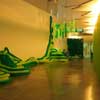
image from University of Melbourne
Date: Thursday, 21 Feb 2013, 7pm to 8pm
Venue: Carrillo Gantner Theatre, Sidney Myer Asia Centre, 700 Swanston St
In the first ABP Dean’s Lecture of 2013, iconic British architect Professor Sir Peter Cook will talk about the evolution of his international career – from Archigram, the avant-garde architectural group formed in the 1960s, to CRAB the innovative practice he established with Gavin Robotham six years ago.
Renowned for his ingenuity and experimental design style, Cook is responsible for such projects as the Taiwan Tower for Taichung, Vallecas Housing in Madrid, and the School of Architecture at Bond University in Queensland which is nearing completion.
ABP AGENDA: Profiling the people and practices transforming our modern world
Free Public Event: More than one way to skin a building
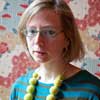
image from University of Melbourne
Date: Thursday 7 Mar, 7pm to 8.30pm
Venue: Carrillo Gantner Theatre, Sidney Myer Asia Centre, 770 Swanston St, Parkville
Introducing the new ABP AGENDA series, profiling the people and practices transforming our modern world. ABP AGENDA kicks off in 2013 with renowned New York-based design critic and blogger, Alexandra Lange.
Alexandra will be a guest speaker on a public forum exploring the function and evolution of architecture writing and how digital media has opened up a new and seductive space for design criticism. Leading figures in Australian Architectural media will join Lange to explore the challenges and potential of critical discourse, the built environment and digital media. They include: Justine Clark (architectural writer, editor of Parlour and former editor of Architecture Australia), Michael Holt (editor of Architectural Review Asia Pacific and former practicing architect and critic in New York), Dr. Rory Hyde (architect, broadcaster and author of Future Practice, 2012) and academic Dr. Karen Burns (University of Melbourne).
Book Launch: Australia’s Unintended Cities by Richard Tomlinson
Date: 28 Nov Venue: MSD Graduate Lounge, Baldwin Spencer Building
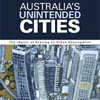
image from University of Melbourne
Australia’s Unintended Cities, edited by Professor Richard Tomlinson, identifies and researches housing and housing-related urban outcomes that are unintended consequences of other policies, the structure of incentives and disincentives for the housing market, and governance arrangements for metropolitan areas and planning and service delivery.
It is argued that unintended consequences have a greater impact on the housing market and Australia’s cities and their future than policies directly concerned with housing, urban policy and metropolitan strategic planning.
The book will be launched at a special ceremony by Dr. Marcus Spiller, Founding Director, SGS Economics and Planning and Professor Terry Burke, The Swinburne Institute for Social Research, Swinburne University of Technology, on 28 November at 5.30pm.
Book Launch: Making Landscape Architecture in Australia
Date: 4 Dec 6pm
Yasuko Hiraoka Myer Room, Level 1, Sidney Myer Asia Centre
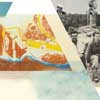
image from University of Melbourne
Dr. Chris McAuliffe, Director of the Ian Potter Museum of Art and Kirsten Bauer, Director of Aspect Studios, will together launch Dr. Andrew Saniga’s new book, Making Landscape Architecture in Australia.
This history of landscape architecture in Australia, the first of its kind, profiles the people who have shaped the nation’s landscape and forged a profession: designers, architects, public servants and activists. Making Landscape Architecture in Australia tells the story of the battles fought over the right to determine the distinctive shapes and forms of the landscapes that make Australian cities.
Paper Nature
Date: 6 – 16 Dec 2012
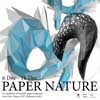
image from University of Melbourne
Venue: Melbourne’s GPO, 350 Bourke Street
Virtual Environments Student Exhibition
Paper Nature features a selection of student concepts which re-imagine the traditional paper lantern by drawing inspiration from complex systems and patterns found in nature. Designed and made by first years students studying the Bachelor of Environments course, the lanterns are created using a combination of digital fabrication techniques and hand crafting. With their sculptural forms and intricate surfaces, the models can be read both as proto-architectural experiments and abstract diagrams of natural processes. The exhibition showcases work produced by students in Virtual Environments, a first year digital design subject.
Six Degrees of innovation
Date: 22 Oct – 23 Nov 2012
A University of Melbourne exhibition will celebrate 20 years of architecture in the city.
Architecture firm Six Degrees is known for reinvigorating Melbourne’s laneways and bar scene through the design of bars such as Meyers Place.
The exhibition, Greatest Hits 1992-2012, will focus on Six Degrees’ first 20 years, featuring drawings, sketches, documentary photography and film, art projects, self-built work, archival material and built works.
The opening on 19 October will see Six Degrees staff and several students pour a concrete bar in the exhibition space to highlight their bar design work.
The exhibition is part of the Faculty of Architecture, Building and Planning’s Alumni Retrospective Series. Six of Six Degrees’ founding directors graduated from the University of Melbourne in 1989.
Dean of the Faculty of Architecture, Building and Planning Professor Tom Kvan said this exhibition series celebrated the work of graduates of the Faculty.
“It highlights their contributions to Australia’s design culture and our built environment,” he said.
James Legge, of Six Degrees, said the company had always been based on a democratic, business friendship.
“Enduring ideas are an interest in craft, detail, clear planning, blending of public and private space, and recycled or re-valued materials,” he said.
Several Six Degrees projects have become city icons including the City Square and the Boatbuilders Yard at Southwharf.
Exhibition details: 22 October – 23 November, Wunderlich Gallery, Ground Floor, Architecture Building, University of Melbourne. www.abp.unimelb.edu.au/events/six-degrees
Anthills to Labyrinths: Engineering Sustainable Architecture
Date: 9 Oct 2012
A free public lecture by Patrick Bellew, Principal, Atelier Ten
Venue: Prince Philip Theatre, Architecture Building
Patrick Bellew, the environmental engineer who was instrumental in the creation of the Labyrinth at Federation Square, will present a special public lecture on engineering sustainable architecture on 9 October.
Federation Square, Melbourne:
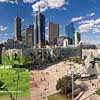
image from University of Melbourne
Patrick Bellew is the founding Director of Atelier Ten, one of the UK’s Royal Designers and is a Chartered Building Services Engineer with more than thirty years’ experience in the design of high performance buildings and systems. Atelier ten have become one of the world leaders in sustainability, with projects across Europe, North America, the Middle East and Asia.
In his lecture, Patrick will reflect on the changing influences and drivers of ‘green’ design, on the things and people that inspired him and the technologies that have evolved in response to the challenge of high performance building design. Patrick will focus on the importance of the collaborative process in the evolution of high performance buildings, a key factor in the design and construction of Federation Square.
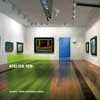
image from University of Melbourne
Patrick’s return coincides with the October celebrations of Federation Square’s tenth anniversary, which will feature a host of events throughout the birthday weekend, 25 – 28 October. Patrick’s lecture will give a unique insight into this landmark space, including the collaboration that led to its creation. The winning design by LAB Architecture Studio, in association with Bates Smart, was a close collaboration with talented engineers and consultants. None was more important and had a more profound effect on the success of the project than the input and creativity of Patrick Bellew.
Atelier Ten designed the Labyrinth, a passive cooling system, hidden above the railway and under the sloping plaza of Federation Square. It provides low-energy cooling and heating for the Atrium and supplemental cooling to the offices of the Alfred Deakin Building. Donald Bates, Chair of Architectural Design at the University of Melbourne and Director, LAB, has described the Labyrinth as ‘the hidden gem of sustainability at Federation Square.’
For more information on this free public lecture and to RSVP please visit http://www.abp.unimelb.edu.au/events/anthills-labyrinths
Six Degrees Greatest Hits
Alumni Retrospective Series Exhibition
Date: 19 Oct – 23 Nov 2012, 9am – 5pm
Venue: Wunderlich Gallery, Architecture Building, University of Melbourne
Six Degrees feature twenty years of their work in the Wunderlich Gallery as part of ABP’s Alumni Retrospective Series, an annual series of events which celebrates the work of Faculty graduates and highlights the exceptional contribution they make to Australia’s design culture and built environment.
The vaults under Federation Square, Melbourne:
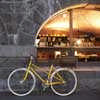
photo : Paul Allister
The firm, known for their ability to design for high use spaces, such as social venues and universities, will present Greatest Hits 1992-2012, focusing on first twenty years of the firm’s work. The exhibition will feature drawings, sketches, documentary photography and film, art projects, self-built work, archival material and built works. The exhibition will centre around a built form containing relics, objects and drawings, seating, lighting, a speaker’s box and, of course, a concrete bar. The opening on 19 October will be marked by the pouring of the concrete bar, with the assistance of ABP students.
Six Degrees have been part of the cultural fabric of Melbourne’s CBD since they designed the first laneway bar, Meyer’s Place and they have continued to contribute to the rich bar culture Melbourne is so well known for. Dark laneways are not the only design terrain of this talented firm. They are also responsible for revitalizing other neglected part of the city including the Vaults below Federation Square, the City Square retail precinct and the Boatbuilders Yard at Southwharf.
The founding Directors of Six Degrees are Craig Allchin, Mark Healy, James Legge, Peter Malatt, Dan O’loughlin (all alumni of the University of Melbourne, 1989) and Simon O’Brien (RMIT).
For more information visit http://www.abp.unimelb.edu.au/events/six-degrees
John Andrews Symposium and Public Lecture
19 Oct: Free Public Lecture by Mary Lou Lobsinger
Laby Theatre, David Caro Building (192)
20 Oct: Symposium led by John Andrews
Hercus Theatre, David Caro Building (192)
Left – Michael Hugo-Brunt, Middle, John Andrews, Right – Michael Hough, Scarborough College Library University of Toronto:
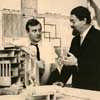
image from University of Melbourne
John Andrews is one of the country’s most significant architects – an international star of late Modernism, who forged a prominent career and reputation in Canada in the 1960s and 70s before returning to Australia. The symposium brings together critics, scholars and colleagues of John Andrews and presents a unique opportunity to hear Andrews’ personal overview of his most substantial built and unbuilt works.
To launch the event Mary Lou Lobsinger, University of Toronto will present a free public lecture outlining Andrews’ Canadian work.
Dean’s Lecture Series – Rafael Sacks
Processes and Products: The Synergies of Building Information Modelling and Lean Construction in a Changing Construction Industry
2 Oct 7pm
Carrillo Gantner Theatre, Basement, Sidney Myer Asia Centre, University of Melbourne

image from University of Melbourne
In the fourth Dean’s Lecture Series of 2012, Rafael Sacks, Head of Structural Engineering and Construction Management in the Faculty of Civil and Environmental Engineering at the Technion in Haifa, will present research and practice on Building Information Modelling (BIM) and Lean Construction. Associate Professor Sacks is the leading theorist in BIM and Lean and produced one of the most influential books on BIM across the world. The lecture takes place on Tuesday 2 October at 7pm in the Sidney Myer Asia Centre, University of Melbourne. BIM and Lean Construction are together bringing fundamental changes to the construction industry. BIM is the process of managing building data by using three-dimensional, parametric, building modelling software to increase productivity in building design and construction. BIM is the first major change to the way we create, store and use information about buildings and building projects since the invention of orthograhic projections. Lean Construction changes the very way we think about the application of resources to design and construction, maximising value and minimising waste. When people use BIM and apply Lean Construction practices in concert, new ways of working emerge.
In this free lecture, Associate Professor Sacks will outline the principles of BIM and Lean Construction and discuss how they interact, using examples from projects in the US, Finland and Israel. Sacks will present recent developments in research and practice, dealing specifically with the flows of information in detailed design, the behaviour of subcontractors, the relationship between design changes and production workflows during construction and the move to prefabrication off-site. Sacks will also demonstrate KanBIM, a prototype of a novel workflow control system for construction on site, based on Lean principles and BIM technology, developed by his lab at the Technion.
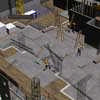
image from University of Melbourne
Associate Professor Sacks has undertaken ground breaking research and development in the areas of BIM and Lean Construction and is a leader in his field. He co-authored the BIM handbook, the most influential text on BIM to date across the world.
Exhibition: An exhibition of recent projects by Rafael Sacks will be held in the Wunderlich Gallery, 1 – 12 Oct 2012.
University of Melbourne School of Design – Recent Event
Eyal Weizman Public Lecture
The Least of all Possible Evils: Architecture, Forensics and the Laws of War
6 Sep 6.30pm
Prince Philip Theatre, Architecture Building, University of Melbourne
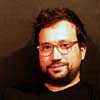
image from University of Melbourne
The Faculty of Architecture, Building and Planning, together with Melbourne Social Equity Institute present Eyal Weisman, Architect, Professor of Visual Cultures and Director of the Centre for Research Architecture at Goldsmiths, University of London.
From analysis of mass graves of the Guatemalan highlands, the killing fields of Yugoslavia and the villages of Darfur, to modes of investigating the urban destruction of the refugee camps of Gaza, a new paradigm for the representation and documentation of calamities and catastrophes has emerged. A recent shift of emphasis from human testimony to material forensics, from trauma and memory to scientific analysis, has started to challenge our aesthetic conception of history and politics. Within the context of this forensic turn, architecture is rapidly becoming the pathology of our era.
In this thought provoking lecture Eyal Weisman, Architect, Professor of Visual Cultures and Director of the Centre for Research Architecture at Goldsmiths, University of London, will discuss the urbanisation of conflict (violations of human rights and the laws of war) and how these violations are frequently produced by the very means architecture – both in its construction and destruction. He will review how architectural representations – maps, plans, datellite imagery, aerial footage, physical amd digital models – are consistently called upon as evidence in tribunals and international courts.
Melbourne Latin America Dialogue
29-30 Aug
Architecture Building, University of Melbourne
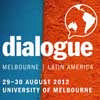
image from University of Melbourne
Three special events will take place in the Architecture Building as part of the Melbourne Latin America Dialogue hosted by the University of Melbourne as part of its commitment to enhancing relations between Latin America and Australia.
29/08: A panel discussion entitled, Liveability and Resilience – Infrastructure, Public Spaces and Housing in Latin American Cities, will take place in the Ezone Theatre (first floor, Architecture building) at 5pm. Panellists include, Lorenzo Castro (Architect), Pedro Pacheco (Architect), Justyna Karakiewicz (Associate Professor, University of Melbourne), Dr. Peter Raisbeck (Academic, University of Melbourne). The discussion two Latin American urban practitioners will talk about how they have shaped processes of design and community development in Colombia and Mexico, with input from academic and industry leaders across the areas of urban design, community development and planning.
http://abp.unimelb.edu.au/events/resilience-ad-liveability
Casa Techos:
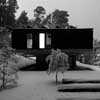
image from University of Melbourne
29/08: Following the discussion, an exhibition of Architecture and Design, featuring the work of Lorenzo Castro, Mathias Klotz and Martha Fajardo, will take place in the Atrium. This stunning exhibition features a narrative of two cities by Lorenzo Castro and Alejandro Echeveri, a journey shaped by landscape design by Martha Fajardo and a collection of houses in Argentina, Uraguay and Chile created by Klotz. The official opening will directly follow the panel debate at 6pm and refreshments will be served.
http://abp.unimelb.edu.au/events/melbourne-latin-american-dialogue-exhibition
Mathias Klotz (left) ; Martha Fajardo (right):


image from University of Melbourne
30/08: An exhibition by the students of the MSD Mexico Travelling Studio entitled, ESTUDIO ITINERANTE DE MÉXICO 2010-2012 – Proposiciónes y incursions, will take place the following day (30 August) at 1pm in the Atrium Annex. The exhibition is the result of an intensive design studio focused on studying processes of informal housing and urbanisation in Mexico City and Monterrey. The students and studio leaders will be joined by Pedro Pacheco, the Portuguese Architect behind Igreja da Luz, Largo da Madalena and Restaurante Santa Rita. Pedro is from partner University, ITESM Monterrey and was an expert contributor for the 2012 Mexico Travelling Studio.
17 Jul 2012
University of Melbourne Architecture News
Caroline Bos at University of Melbourne
MSD Dean’s Lecture Series Presents Architect Caroline Bos
LECTURE: More, not Less – Value Engineering for Architecture
Architect Caroline Bos will reveal the value of strategically designed subsidiary spaces in her free public lecture, on Tuesday 7 August 2012 in the Carrillo Gantner Theatre, Basement, Sidney Myer Asia Centre at the University of Melbourne as part of the MSD Dean’s Lecture Series.
Caroline Bos, architect:
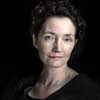
image : Inga Powilleit
Co-founder of UNStudio (United Network Studio), a thriving architectural practice in the Netherlands specialising in architecture, urban development and infrastructure projects, Caroline Bos will explore architects’ propensity to polarize prime, showcase spaces and the more humble subsidiary spaces. Bos will propose that architecture and urban design should stop creating this distinction and consider subsidiary spaces during the pivotal design stages. Caroline will outline specific projects by UNStudio which demonstrate the use of transitory, non-specific spaces as focal points in projects of all scales.
Burnham Pavilion by UNStudio:
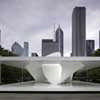
image : Christian Richters
Current projects include the restructuring of the station area of Arnhem, a dance theatre for St. Petersburg and the mixed-use Raffles City in Hangzhou. Realized projects include the Mercedes-Benz Museum in Stuttgart and a facade and interior renovation for the Galleria Department store in Seoul.
EXHIBITION: An exhibition of recent projects by UNStudio will be held in the Wunderlich Gallery, Architecture Building, University of Melbourne, from 30 July to 10 August 2012.
8 Dec 2011
University of Melbourne News
Melbourne School of Design
Architecture for a better community: students honoured by international awards
Two postgraduate students from the Melbourne School of design were awarded prestigious awards by the Royal Institute of British Architects (RIBA). The awards commend the students’ contribution to Indigenous housing and the role of architects in increasing the quality of life in developing nations.
The recipients of these awards, Hannah Robertson and Dr Milinda Pathiraja from the Melbourne School of Design, received their awards in a London ceremony on December 7.
Bush Owner Builder – Building at Hope Vale, Queensland:
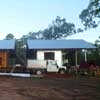
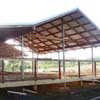
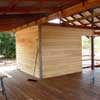
Hannah Robertson received the 2011 RIBA President’s Student Dissertation Medal for her Master’s Dissertation, Bush Owner Builder. Her winning project was judged alongside 47 dissertations coming from 9 countries.
For her thesis, Hannah Robertson consulted with Indigenous Autralians in Queensland to create designs for housing, and then worked with the community to construct the buildings. Ms Robertson said, “the project aims to tackle some of the issues in Indigenous housing by providing ownership: ownership of the design, building process and the eventual built outcome.”
Professor Philip Goad, the supervisor of Ms Robertson’s Masters thesis said, “the RIBA President’s Dissertation Medal, one of the world’s most prestigious student awards, is fitting international recognition for Hannah’s outstanding and important collaboration with the indigenous community in Hope Vale, far north Queensland.”
“Her work demonstrates the excellent calibre of students within the Melbourne School of Design and this award demonstrates how detailed design research undertaken locally can have global significance,” said Professor Goad.
The Melbourne School of Design has a strong history of engagement with Indigenous communities and working in consultation with remote communities to design and deliver projects.
Dr Pathiraja’s award-winning PhD was inspired by similar community oriented sentiments, and investigates the contribution architects can make to labour policy and supporting developing economies through construction projects. The award given to this dissertation by RIBA recognizes this issue as a significant area to change current practices to facilitate positive economic growth.
With both Ms Robertson and Dr Pathiraja featuring prominently in the Royal Institute of British Architects line up of awards London, architecture and design students at the University of Melbourne are among the leaders of the next generation of international built environment professionals.
Melbourne School of Design images / information from University of Melbourne
Location: University of Melbourne, Melbourne, Victoria, Australia
Architecture in Melbourne
Melbourne Architecture Designs – chronological list
Melbourne Architecture Walking Tours
Melbourne Architect Offices – design studio listings
30 Mar 2009
University of Melbourne Building Contest
Architecture, Building & Planning
New Building Competition : Faculty Architecture Building & Planning (ABP), University of Melbourne
Expressions of Interest (EoI) are invited from architects and architectural practices, individually or in collaboration, interested in working with the Faculty and the University in the role of architect for the new building.
University of Melbourne Building : Competition News
Melbourne Buildings – Selection
Victoria University of Technology – Lecture Theatre, Werribee Campus
Michael McKenna Pty Ltd / Morgan McKenna Pty. Ltd
Victoria University of Technology
AAMI Park
Cox Architects and Planners with ArupSport
AAMI Park Stadium
Comments / photos for the University of Melbourne Architecture Events – Australian Architecture Education page welcome

